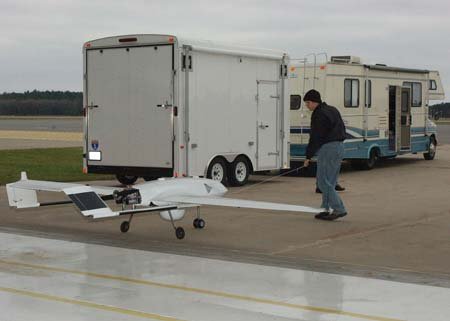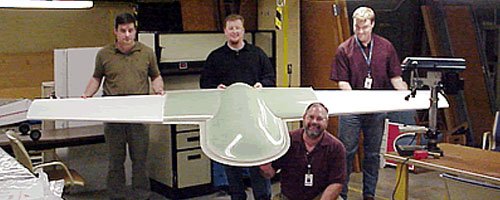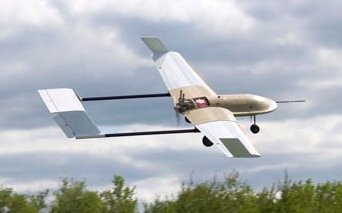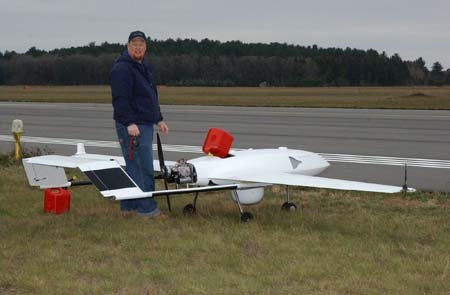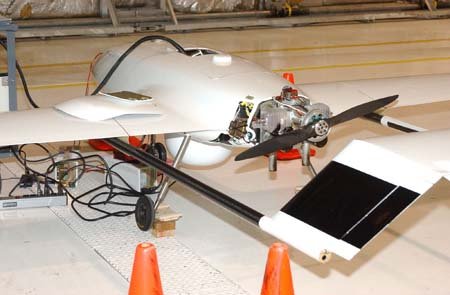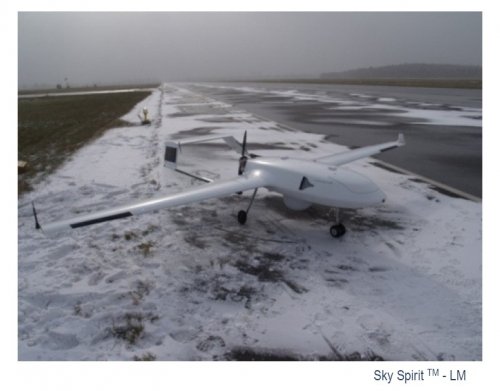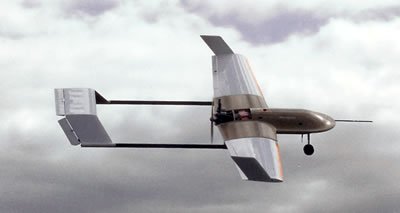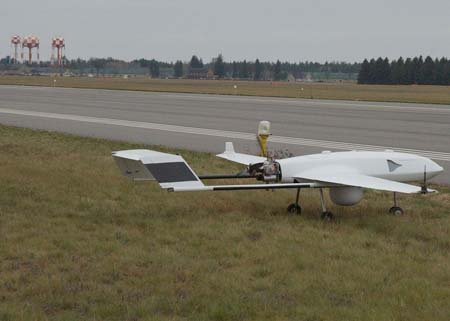TAGBOARD said:
Sky Spirit, Sky Spirit ER or SR-X. I can provide further information if there's more interest.
Thanks a lot for the info! This name alone has enabled me to find more about that UAV from the web (although I don't know about the "SR-X" bit, which to me designated a very different Lockheed Martin program). Here is a small article I compiled from various online sources. Please correct me if I got anything wrong!!
The
Sky Spirit was a lightweight, low-wing monoplane tactical mini-UAV with twin tails and a pusher propeller. The project was started in 2005 by Lockheed Martin's MS2 Tactical Systems division under the supervision of Scott E. Morgan and in cooperation with the University of Minnesota. Engineering development was completed in 2006, with the
Sky Spirit being flight-tested at the Army National Guard's Camp Ripley training facility near Little Falls, Minnesota, from the middle of August onwards.
The
Sky Spirit was designed for intelligence, surveillance and reconnaissance missions, force protection (convoy support), target acquisition, deep penetration surveillance and covert delivery of small packages in denied territories. It is also designed to allow flexible payload and fuel-weight combinations, as well as extended endurance profiles and persistent surveillance capabilities in excess of 22 hours, covering 50 nautical miles area of influence. An extended range derivative, the
Sky Spirit ER, was also proposed.
The
Sky Spirit platform was built from Kevlar fibers and epoxy matrix composites. The fuselage of the basic model was 112 inch (2.84 m') long and 122 inch (3.1 m) for the ER version. The design incorporated a mid-body wing with trailing edge mounted engine. Propulsion was provided by a modified, commercial four stroke 5 HP engine-alternator, delivering more than 500 watts for electrical power. The wing span was 11.5 ft (3.51 meters) for the Sky Spirit model, and 16 ft (4.88 m) for the ER. Empty weight was 35 lbs (15.8 kg) for
Sky Spirit and 57 lbs (25.8 kg) for the ER model.
Communications and data links antennas were embedded in the winglets and supported high data-rate transmissions of up to 20 MB/S over S-Band. The UAV's survivability was enhanced by the design of its fuselage for reduced radar cross section. The pusher propeller and tail section contributed to an aerodynamically stable platform that improved the performance of its sensor payload. The vehicle includes retractable landing gear designed for takeoff and landing from unprepared grass strips without special support equipment.
A basic configuration aircraft was used to support flight demonstrations of a Sandia National Laboratories/Rockwell Collins miniature synthetic aperture radar in October 2006. During a field exercise, the
Sky Spirit, fitted with a Sandia National Laboratories-developed MiniSAR sensor, soared to nearly 3,000 feet and, in near real-time, became the first UAS to transmit four-inch-resolution SAR imagery. During four different missions, the
SkySpirit transmitted MiniSAR images in two operational modes — focused area circle-mapping and broad area strip-mapping. Several imaging passes were post-processed to demonstrate coherent change detection used to identify changes over time.
This demonstration was the first time that an autonomous flight of a small tactical UAS has captured SAR data of this type and resolution. The use of a MiniSAR, which was produced by Rockwell Collins in Cedar Rapids, Iowa, was meant to greatly enhance a ground unit’s surveillance capabilities with a UAS, delivering high-resolution images to ground units in all weather, day or night conditions, as well as operating in various modes, including ground moving-target indicator and coherent change detection.
In a parallel program started in September 2005 and funded by ND EPSCoR, the U.S. Air Force UAV Battlelab, and the North Dakota Department of Commerce, an electro-optical (EO) and uncooled thermal infrared (IR) digital imaging payload with fixed cameras, was designed by undergraduate EE and ME students from the University of North Dakota for integration into the
Sky Spirit ER version. This payload was flown by Lockheed Martin personnel at Camp Ripley on October 25, 2006.
Lockheed examined potential applications of the UAV as an unmanned adjunct to existing manned maritime surveillance aircraft. The Sky Spirit was exhibited in August 2007 at the
Unmanned Systems North America exhibition in Washington, and in September, Lockheed Martin MS2 Tactical Systems said it was seeking export release approvals to conduct a demonstration of the
Sky Spirit in early 2008 as a littoral surveillance asset for a potential Indian Ocean rim customer, but this was not heard of afterwards.
The
Sky Spirit UAS program has since been terminated by Lockheed Martin.
Specifications:
Basic variant
• Length: 112 in (2.84 m)
• Wing span (basic): 11.5 ft (3.51 m)
• Empty weight: 35 lbs (15.8 kg)
ER variant
• Length (ER variant): 122 in (3.1 m)
• Wing span (ER): 16 ft (4.88 m)
• Empty weight: 57 lbs (25.8 kg)
• Gross take-off weight: 180 lbs (81.8 kg)
• Payload capacity: 75 lbs (34.1 kg)
Accommodates Mini-SAR, raw data recording capability, special mounting, etc.
• Payload Cassette Volume
–Accommodates miniSAR REA, AGA
–Accommodates additional space for raw data recording, payload management, and data communications links
• 600+ W, 5, 12 and 28 VDC power
–Mini-SAR, data link, raw data recording, reserve
–Accommodates radome
–High speed data link
–Robust control data link
Main sources:
http://defense-update.com/products/s/sky_spirit.htm
http://www.flightglobal.com/news/articles/littoral-surveillance-trial-for-sky-spirit-uav-216961/
http://www.flightglobal.com/directory/detail.aspx?aircraftCategory=uav&manufacturerType=uav&navigationItemId=372&aircraftId=7538&manufacturer=3016&keyword=&searchMode=Manufacturer
http://www.flintridgeprep.org/newsStory.aspx?id=1426
http://www.federallabs.org/pdf/Industry_Perspectives_1_Dorothy_Stermer_and_Russell_Frew.pdf
http://www.minnesotanationalguard.org/press_room/e-zine/articles/index.php?item=147
http://engineering.und.edu/research/unmanned-aircraft-systems-engineering/payloads-and-projects/eoir-digital-imaging-small-uas-payload.cfm
